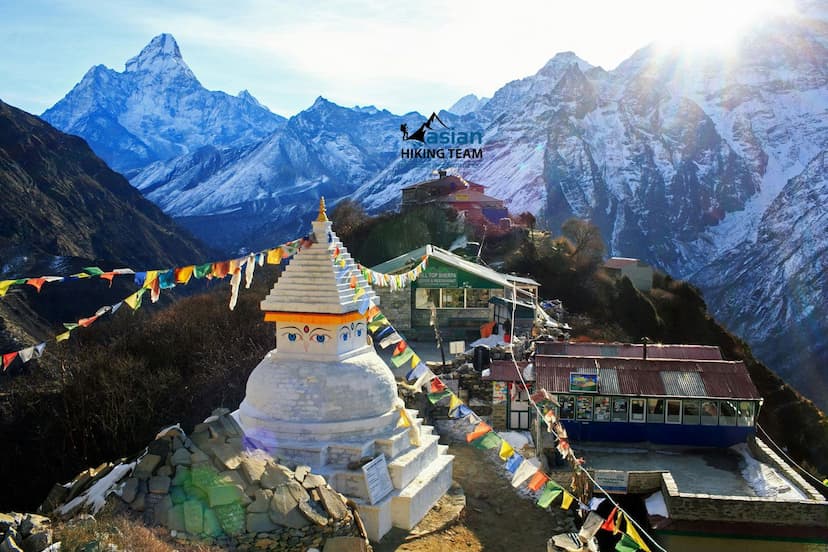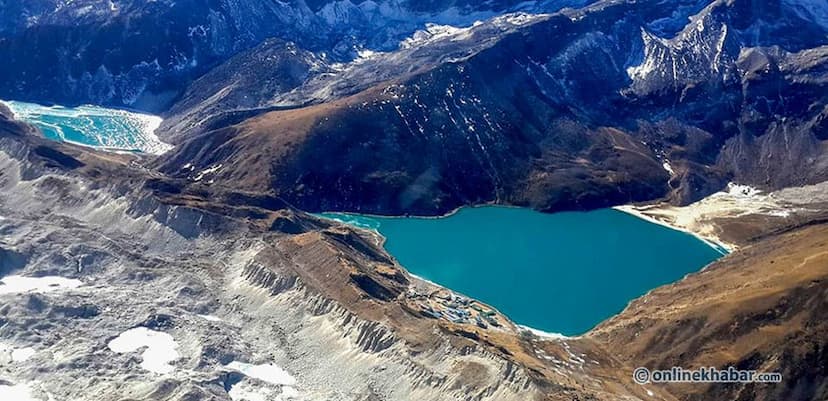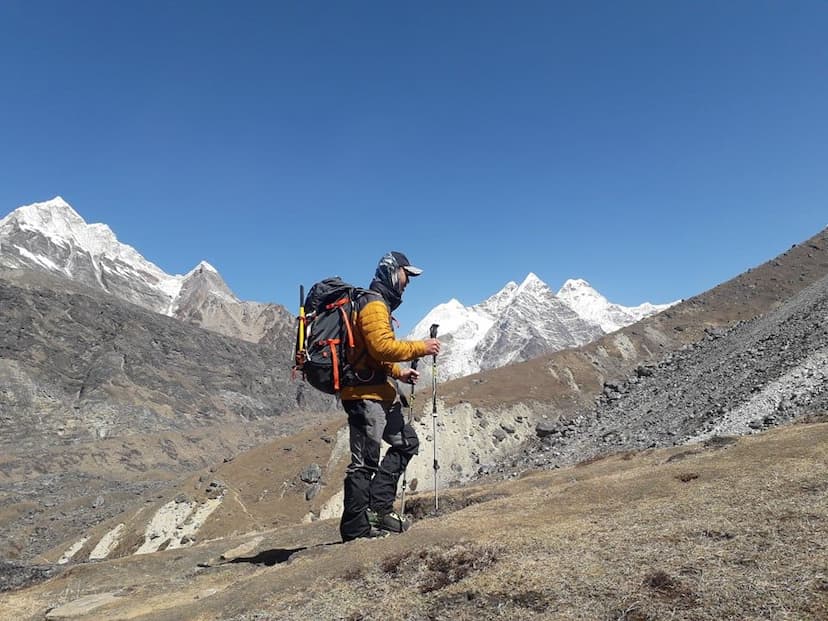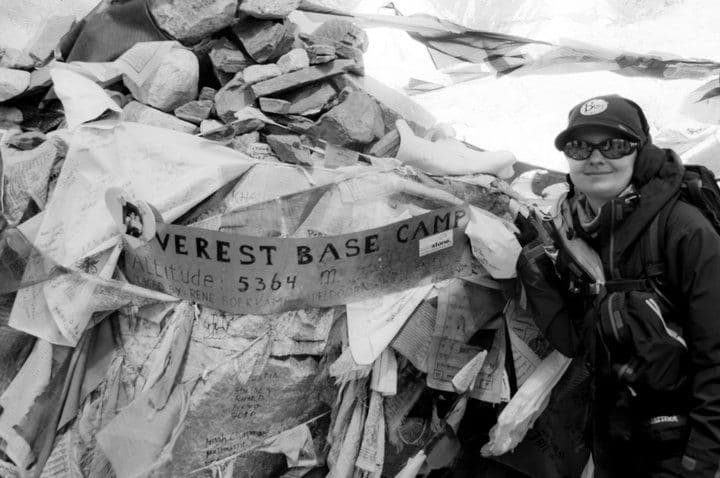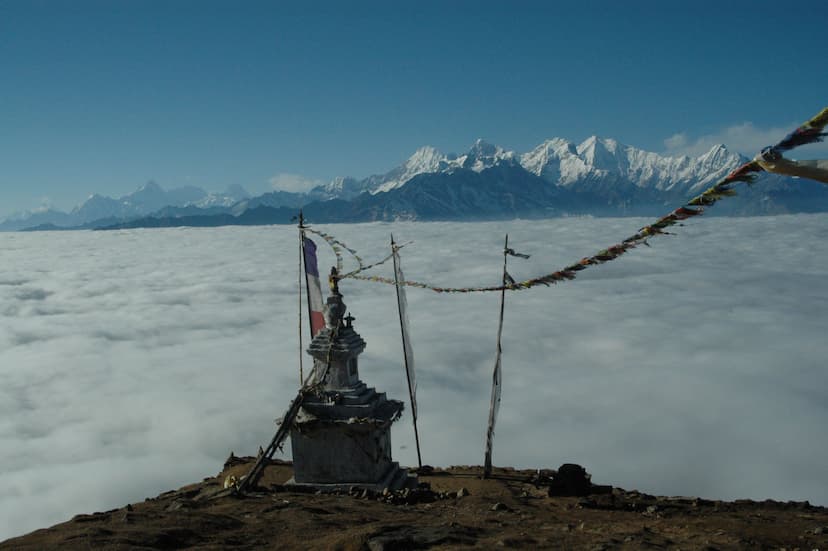The Annapurna Circuit
The Annapurna Circuit is a famous 300-kilometer trek in Nepal, known for the challenging Thorong-La Pass at an altitude of 5,416 meters. Located in the central-north region of Kathmandu, it passes through the Gandaki Province, covering districts such as Tanahu, Lamjung, Manang, Mustang, Parbat, and Kaski.
The Annapurna Circuit is a famous 300-kilometer trek in Nepal, known for the challenging Thorong-La Pass at an altitude of 5,416 meters. Located in the central-north region of Kathmandu, it passes through the Gandaki Province, covering districts such as Tanahu, Lamjung, Manang, Mustang, Parbat, and Kaski.
This trek follows ancient trade routes that were once used for the salt trade between Nepal and Tibet. Over the centuries, the Annapurna trail has facilitated the exchange of cultures and religions in this remote area. The region is a mix of Tibetan Mahayana Buddhism, Hinduism, and the Bon-Po religion, all of which coexist harmoniously, contributing to the rich spiritual atmosphere. The Annapurna region also features numerous pilgrimage sites that attract both locals and visitors alike.
The trek can be extended to include a visit to the Annapurna Base Camp, adding about one extra week to the journey. From Ghorepani, trekkers make their way to Tadapani,
Trip Facts
Group Size
01 to 30 pax
Maximum Elevation
5416m
Location
Western part of Nepal – Annapurna conservation area
Route
KTM-Chame- Thorongla Pass-Muktinath-Pokhara-KTM
Grade
Strenuous
Best Season
Autumn (Sep. to Nov.) and spring (March to May)
Accommodation
Hotel/Lodge
Transportation
By Tourist bus/ Jeep
The highest point of the trek, offering stunning panoramic views of the Annapurna and Dhaulagiri mountain ranges.
Experience the rich blend of Tibetan Buddhism, Hinduism, and the Bon-Po religion, along with visits to ancient monasteries and spiritual sites like Muktinath.
Trek through diverse landscapes, from lush forests and terraced fields to high-altitude deserts and alpine meadows, all surrounded by majestic mountains.
Stunning Mountain views throughout the trek, with highlights such as Annapurna I, II, III, and IV, and the towering Dhaulagiri.
Crossing Thorong La Pass, the trek’s most challenging section, is a major accomplishment for trekkers seeking a high-altitude adventure.
Enjoy a relaxing dip in the natural hot springs at Tatopani after a long day of trekking, perfect for soothing tired muscles.
Pass through traditional villages like Chame, Manang, and Marpha, where you can interact with locals and experience their hospitality and customs.
An optional extension of the trek that takes you to Annapurna Base Camp, providing even more spectacular mountain views.
- Pick up from International Airport to Hotel.
- Drop from Hotel to Airport.
- Kathmandu to Besisahar by Tourist bus.
- Besisahar to Jagat by Jeep.
- Nayapul to Pokhara by Bus/Jeep/car.
- Pokhara to Kathmandu by sofa seats Tourist bus.
- Hotel in Kathmandu with breakfast as itinerary (here are so many options, we provide on cost 3-star hotel if you want higher star please add on option.
- Accommodation during the trekking: Single/Twin-sharing room with wooden beds, foam mattresses, and blankets (bring a sleeping bag for extra warmth/hygiene). Most of the place have shared toilets (usually Asian-style squat or Western toilets). Some of the place has attached toiled. Hot showers available (on extra cost). Higher up, hot water is scarce.
- Breakfast: Porridge/Oatmeal (often with honey, fruits, or nuts), eggs (fried, scrambled, or omelets with veggies), Pancakes or Tibetan Bread (served with jam, honey, or peanut butter), Muesli/Cornflakes (with hot or cold milk), Tea/Coffee (black, milk tea, or ginger lemon honey tea) etc.
- Lunch: Dal Bhat (Nepali staple: lentil soup, rice, vegetable curry, and pickles—unlimited refills!), Noodles/Pasta (fried noodles, garlic pasta, or ramen), Momos (dumplings stuffed with veggies or meat), sandwiches (egg, cheese, or tuna), soup (garlic, mushroom, or veggie—popular for warmth and hydration) etc.
- Dinner: Dal Bhat, Curries (veggie, potato, or chicken with rice or chapati), Thukpa (local noodle soup), Pizza, Pasta, Fried Rice/Noodles, Desserts (apple pie, rice pudding, or Snickers rolls etc.).
- Annapurna Conservation permit / Entrance fees.
- TIMS permit if required.
- Local Entry permit / Entrance fees if requre.
- Entrance fees in Monastery/temple during the trekking.
- Trekking Guide: A First Aid and Eco trained & Government licensed holder professional equipped English-speaking guide.
- Support Sherpa: if the group size more than six persons, we provide one extra Sherpa to support the group.
- Porters: One Porter between each 2 members while on trek (Maximum weight for a porter is 25 Kg). If you are single booking the porter cost need to pay extra, please add the cost add on option.
- Accommodation, meals, daily salary, equipment, transportation & Insurance of Asian Hiking Team staffs (guide, Sherpa, porter).
- Trekking Map /Itinerary: Asian Hiking Team provides free a copy of trekking map /trekking Itinerary to our client.
- Sleeping Bag: Asian Hiking Team provide sleeping bag, the sleeping bag is (-20 degrees). If you are planning high passes trekking/ camping trekking or climbing you should be need to bring your own which is -30.
- T-short: Asian Hiking Team provide the company T-short for a souvenir.
- Certificate: Asian Hiking Team provide Trekking/Hiking/Tour/Climbing success certificate for your memory and awardees.
- First Aid: First aid is the immediate assistance given to someone who is injured or ill until professional medical help is available. Its goal is to preserve life, prevent further harm, and promote recovery. Asian Hiking Team staff carry the basic first aid. You need to bring your own personal medicine with you. If you are trekking in high altitude should be bringing Diamox for acclimatization (125 mg tabs recommended; enough for a week or more). You can buy here in Kathmandu any pharmacy.
- Farewell dinner: Asian Hiking Team provide a farewell dinner with Nepalese cultural programs the last day of the trip.
- Travel & Rescue arrangement service: You should bring insurance, must include emergency air ambulance/helicopter rescue services.
- International air ticket to/from Nepal.
- Nepal tourist visa: for the Nepal Tourist visa fees, process of visa, further rules and regulation please check here https://www.immigration.gov.np.
- Accommodation: Asian Hiking Team provide the hotel in Kathmandu and during the trekking as itinerary. If you stay an additional day, you need to pay an extra cost.
- Meals: Lunch and Dinner are not includes in Kathmandu.
- Tea/ Coffees/ Hot water, hot showers etc.
- All cold drinks, alcohol drinks, beer, bottle water etc.
- Pack energy bars, nuts, chocolate for quick energy boosts between meals.
- Personal trekking gears & clothing (some of the equipment is possible to rent in Kathmandu): please check in check list for equipment list
- There are almost all trekking reason you can buy internet/ Wi-Fi service in the hotel. It is also possible to buy the NCAL or NTC Sim card for telephone or use data.
- Medical evacuation in case of emergency, expenses incurred due to mishaps, landslide, strikes, political unrest etc. in such case extra will be charged as per actual.
- Kathmandu: During the sightseeing in Kathmandu or Pokhara the entry fees for Temple or Monastery, Durbar Square are not includes on the cost.
- It's a way to show appreciation for good service and is often left as a small present or in addition. Tips are a common practice in many cultures and are often expected for services. It is not fix amount, so you can own decide.
- Asian Hiking Team provide one porter between two members. If you want to hire the additional porter, the cost in not includes.
- If you want personal Sherpa/guide, it is not including on the cost.
| Date | Duration | Status | Booked | Action |
|---|---|---|---|---|
Feb 27, 2026 Mar 15, 2026 | 17 days | Open | Book Now | |
Mar 6, 2026 Mar 22, 2026 | 17 days | Open | Book Now | |
Apr 14, 2026 Apr 30, 2026 | 17 days | Open | Book Now | |
May 16, 2026 Jun 1, 2026 | 17 days | Open | Book Now | |
Jun 12, 2026 Jun 28, 2026 | 17 days | Open | Book Now | |
Sep 15, 2026 Oct 1, 2026 | 17 days | Open | Book Now | |
Oct 12, 2026 Oct 28, 2026 | 17 days | Open | Book Now | |
Nov 18, 2026 Dec 4, 2026 | 17 days | Open | Book Now | |
Sep 16, 2026 Oct 2, 2026 | 17 days | Open | 2 | Book Now |
May 22, 2026 Jun 7, 2026 | 17 days | Open | 2 | Book Now |
Oct 12, 2026 Oct 28, 2026 | 17 days | Open | 2 | Book Now |
Nov 16, 2026 Dec 2, 2026 | 17 days | Open | 4 | Book Now |
Nov 27, 2026 Dec 13, 2026 | 17 days | Open | 2 | Book Now |
Mar 10, 2027 Mar 26, 2027 | 17 days | Open | 1 | Book Now |
Mar 18, 2026 Apr 3, 2026 | 17 days | Open | 4 | Book Now |
Mar 25, 2027 Apr 10, 2027 | 17 days | Open | 2 | Book Now |
Apr 14, 2027 Apr 30, 2027 | 17 days | Open | Book Now | |
Apr 8, 2027 Apr 24, 2027 | 17 days | Open | 4 | Book Now |
May 20, 2027 Jun 5, 2027 | 17 days | Open | 1 | Book Now |
Tailored add-ons in Nepal trips refer to customizable essentials that enhance and personalize your travel experience, allowing you to align your journey with specific interests, preferences, and schedules. These add-ons can be combined into various types of trips, including trekking, expedition, climbing, cultural tours, wildlife safaris, and adventure activities.
Tailored add-ons include:
Customized Accommodations: Choose from a range of lodging options, from luxury hotels to homestays, to match your comfort and budget preferences. Upgrade your stay to accommodation featuring attached bathrooms during your trek.
Porter/Sherpa Service: Let our skilled porters carry your gear so you can focus on the breathtaking beauty of the Nepal Himalaya. Each porter can transport up to 25 kg and can be shared by two trekkers.
Adventure Activities: Incorporate thrilling experiences such as paragliding in Pokhara, bungee jumping, zip-lining, mountain biking, or white-water rafting.
Spiritual Journeys: Add visits to sacred sites like Lumbini (birthplace of Buddha), Pashupatinath Temple, or...
Accommodation:
Single/Twin-sharing room with wooden beds, foam mattresses, and blankets (bring a sleeping bag for extra warmth/hygiene). Most of the place have shared toilets (usually Asian-style squat or Western toilets). Some of the place has attached toiled. Hot showers available (on extra cost). Higher up, hot water is scarce.
Meals:
During the hotel/guest house trekking, there are international menus so you can choose whatever you like. During the camping, our cook prepares the meals as your interest. Camping treks in Nepal offer a blend of traditional Nepali cuisine and familiar comfort foods, ensuring that trekkers are well-nourished and energized throughout their journey.
Breakfast: Porridge/Oatmeal (often with honey, fruits, or nuts), eggs (fried, scrambled, or omelets with veggies), Pancakes or Tibetan Bread (served with jam, honey, or peanut butter), Muesli/Cornflakes (with hot or cold milk), Tea/Coffee (black, milk tea, or ginger lemon honey tea) etc.
Lunch: Dal Bhat (Nepali staple: lentil soup, rice, vegetable...
Kathmandu to Besisahar (175km)
- Tourist Bus/Mini Bus
- Departures: Tourist bus start at 7AM similar time to Pokhara tourist bus. Locam bus/micro-bus daily start 6:00 AM to 2.00 PM from Gongabu (Naya) Bus Park.
- Duration: 175KM, 5 to 7 hours, depending on traffic and road conditions.
- Road condition: Kathmandu to Besisahar- Mostly paved highway (Prithvi Highway), fairly smooth but prone to congestion near settlements
- Private Vehicle/Hiace/Coaster Duration: 5–7 hours (varies due to road works/traffic) Departure: Anytime, pick up from your hotel/airport. Cost: Every season all cost are changeable so please check by email or WhatsApp for recent cost.
Besisahar to Chame/Manang road - (66KM/76KM)
- Shared Jeep / Bolero / Sumo
- Departure: Frequent departures early morning until 2 PM from Besisahar and from Chame also depends on passengers.
- Travel time: 4–6 hours on rough, unpaved mountain roads.
- Road condition: Besisahar to Chame, starts paved, but quickly becomes unpaved/narrow on through Lamjung and Manang....
General Climate Overview
Nepal's climate is incredibly diverse due to its dramatic range in altitude—from the lowland Terai plains (around 60 meters above sea level) to the Himalayan peaks above 8,000 meters. The country experiences five main seasons: spring, summer, monsoon, autumn, and winter. Each region and elevation zone has its own unique weather patterns.
Terai Region (Southern Plains)
Climate: Subtropical Summer (May–June): Hot and humid, temperatures often exceed 37°C Winter (Dec–Feb): Mild, temperatures range between 7°C to 23°C Receives significant rainfall during the monsoon (June–September)
Hilly Region (Mid-Hills & Valleys)
Climate: Mild and temperate Cities like Kathmandu and Pokhara experience: Summer: 19°C – 35°C Winter: 2°C – 12°C Pleasant weather year-round with occasional winter chills and summer showers
Mountain Region (High Himalayas)
Climate: Alpine to Arctic Summer: Cool to cold, depending on altitude Winter: Severe cold with frequent snowfall Temperatures can drop below -20°C at high passes and base camps Monsoon rains are lighter, but weather remains unpredictable Nepal experiences four distinct seasons, each...
Annapurna Conservation Area Permit
The Annapurna Conservation Area Permit (ACAP) is mandatory for all foreign trekkers entering Nepal's Annapurna region, including routes like Annapurna Base Camp, Circuit, Poon Hill, Khorpa Danda, Mustang and Mardi Himal. Below is a concise guide to the 2025 requirements, costs, and procedures based on the latest regulations:
ACAP (Primary Permit) Cost:
- Foreigners: NPR 3,000 (Approx. $25 USD)
- SAARC nationals (India, Bangladesh, etc.): NPR 1,000 (∼$7.50 USD)
- Nepali citizens: Free.
- Validity: Single entry, no time limit per trek (e.g., 30 days for Annapurna Circuit).
- Purpose: Funds conservation, trail maintenance, and community projects.
- Exemptions: Children under 10
- Checkpoints: ACAP is checked at trail entries; Nayapul (Breathati), Dhampus, Besisahar, Beni and inside the conservation area such as Chame, Manang, Muktinath, Jomsom, Chhorong, Ghorepani, Tatopani etc.
Required Documents:
- Validity Passport (for Indian Voter ID or Rasan Card also fine).
- Nepali Visa.
- Passport-sized photos.
- Trek itinerary (entry/exit dates, emergency contacts).
- Proof...
Asian Hiking Team’s trekking Guides are professionals with recognized records of honesty and personal integrity, committed to environmentally responsible trekking practices that minimize ecological impact. Asian Hiking Team trekking guide duties are to navigate trails, ensure safety, explain local culture/history, arrange permits/accommodations, monitor altitude sickness, and manage logistics. Our guide are fluency in English (and other languages), first aid certification, cultural knowledge, and government licensing. Require Nepal Government licensing, formal training (e.g., Nepal Academy of Tourism/NATHM), first aid certification, and language proficiency. Our guide is friendly, professional, and well-mannered. Trained in customer service, problem-solving, and group handling.
Asian Hiking Team porter: Porters duties is carrying trekker luggage (max 20–25 kg), transport equipment, and assist with camp setup. Physical endurance, basic trail familiarity, and teamwork. Most speak minimal English. No formal credentials, but reputable agencies ensure health checks, basic safety training, and gear provision etc.
Asian Hiking Team Porter-Guides: Porter guide is carrying light...
Annapurna Circuit trekking is a grade C trek in Nepal. Trekking in Nepal is categorized into grades based on altitude, terrain difficulty, remoteness, and daily walking hours. The most widely used grading system includes Easy, Moderate, Strenuous, and Challenging.
Easy (Grade A)
Altitude: Up to 3,000 meters (9,800 ft) Walking Hours: Max 3–5 hours per day Terrain: Well-established trails, gentle ascents/descents, minimal steep sections. Who is it for? Beginners, families, or those with limited time seeking cultural experiences and Himalayan views.
Moderate (Grade B)
Altitude: 3,000–4,500 meters (9,800–14,700 ft) Walking Hours: Max 7 hours per day Terrain: Mixed trails with some steep climbs and high passes, moderate altitude gain. Who is it for? Trekkers with average fitness and some prior hiking experience.
Strenuous (Grade C)
Altitude: 4,500–5,500 meters (14,700–18,000 ft) Walking Hours: Max. 8 hours per day, often for 2–3 weeks Terrain: Remote, rugged trails with high passes; risk of altitude sickness increases. Who is it for? Fit trekkers with prior multi-day...
Altitude Mountain Sickness (AMS)
Trekking in the Himalayas poses risks of Altitude Sickness (AMS). The body needs time to acclimatize to higher altitudes, a process known as acclimatization.
Types of Altitude Illnesses (Acute Mountain Sickness AMS) High Altitude Pulmonary Edema (HAPE): Fluid in the lungs High Altitude Cerebral Edema (HACE): Swelling of the brain High Altitude Retinal Hemorrhage (HARH): Bleeding in the retina
Common Symptoms: Headache Nausea, loss of appetite Sleep disturbance Dizziness, mild weakness Swelling of hands and face Severe Symptoms (Seek Immediate Descent): Severe, persistent headache Shortness of breath at rest Confusion, loss of coordination Bluish lips or face Coughing blood-tinged sputum Coma or unconsciousness
Prevention Tips: Drink 4–5 liters of fluids daily (avoid alcohol) Ascend slowly and rest if symptoms appear Avoid sleeping at a higher altitude if symptoms persist Take Diamox (consult your doctor) before flying to altitude
Food & Water Safety
In Nepal, water and food contamination are common causes of illness. Do: Drink boiled, filtered, or bottled water Eat thoroughly cooked meals Wash fruits/vegetables before eating Boil milk or ensure it’s purified Avoid: Uncooked...
Travel Insurance & Emergency Evacuation
At Asian Hiking Team, we strongly recommend that every participant takes out comprehensive travel insurance that includes:
- Trip cancellation coverage
- Emergency air-ambulance/helicopter rescue services
Please be aware: many standard travel insurance policies do not automatically cover high-altitude trekking, helicopter evacuation, or rescue from remote mountain areas. You must ensure your chosen policy explicitly includes the activities and environments of your trek.
Additionally:
- You must carry proof of insurance (for example, a certificate or policy document) with you at the start of your holiday.
- If you cannot produce valid insurance at departure, you will be required to obtain a suitable policy immediately.
- If you fail to secure the required cover or cannot do so for practical reasons, you will not be permitted to participate in the trekking or climbing trip, and you will not be eligible for any refund for services not provided.
- Your insurance must...
Telephone and Internet:
Telephone service in the Annapurna region is available in towns and villages, but signal strength is unreliable in higher and more remote areas. Most of the place has local telephone. Both Nepal Telecom (NTC) and Ncell are the main mobile providers, with NTC generally offering better coverage in the mountains, though Ncell is faster in lower-lying towns. You can buy a local SIM card in Kathmandu or Pokhara. NTC/NCELL SIM cards work in most areas along the Annapurna trekking route; however, network coverage is unavailable during the Thorongla Pass, Kangla pass, Tilicho pass, and Annapurna base camp section. In case of emergencies, a satellite phone is used for communication.
Internet service is available in the Annapurna region primarily through a lodge-to-lodge Wi-Fi system or via mobile data from a purchased SIM card. Fixed-line broadband is not available on the trekking routes, so it is recommended to buy a...
Credit cards like American Express, Master and Visa are accepted at major hotels, shops, Travel Company and restaurants. 3.5 to 4 percent of the total amount may be converted by the bank. ATMs are widely in use such as Kathmandu, Pokhara, Chitwan-Sauraha, Bhairahawa, Namche, Lukla, Jomsom, Nepaljung, Biratnagar, Lumbini and other major cities and district head office. All major cities or touristic place have money changer or Exchanger counter or Bank exchange counter.
At Asian Hiking Team, travel is not just about reaching a destination—it’s about meaningful transformation for you, the communities we visit, and the natural world around us. Responsible tourism isn’t a checklist; it’s our guiding principle.
Environmental Responsibility
We are dedicated to minimizing our environmental footprint and inspiring mindful travel practices:
- Group sizes capped at 20 travelers to reduce environmental impact.
- Use of stainless-steel mugs and reusable containers to eliminate single-use waste.
- Cooking with gas rather than wood fires, preserving local forests.
- Carrying out all waste from high-altitude camps for proper disposal in town.
- Avoiding soap or chemicals near natural water-sources.
- Encouraging travelers to bring refillable bottles, and using reusable containers.
- Ensuring campsites are cleaner when we leave than when we arrived.
- Minimizing water usage, especially at altitude.
- Staying exclusively on established trails to prevent erosion and habitat damage.
- Reducing paper usage through digital brochures and communications.
Cultural Responsibility
Travel is a...
Trekking Poles : Poles come in handy for balance and easing impact to your knees. Get collapsible poles that can attach to your backpack and fit into your Duffel.
Backpack : You may choose to bring a smaller "day pack" for your airline travel carry on, and this can be used on the trek if you want to carry a smaller (35 liter or so), light trekking pack. You need a pack big enough for your clothes, water, camera, food, etc. during the day. Waterproof rain cover for your trekking pack.
Sleeping Bag : Bring a sleeping bag comfortable to -20 for trekking, however it is better to bring -30 to -35 for climbing. During the trekking in hotel/guest house -20 is fine but on the tented home you need -30 or -35. Down is lighter and much more compressible. Keep in mind that many of your nights will be much warmer than -20, especially on the trek in to base camp.
Duffel Bags : Asian Hiking Team provide one duffel bags each member as you want. We normally pack all our equipment in large Duffel bags. Make sure they are well labeled with indelible ink as well as a travel tag. The duffels go on the trek/climb with you and will be carried by porters or yaks. Except for them to get wet and muddy, so rugged, waterproof duffels are good. Bags with wheels are nice for the airport, but the porters and yaks don't like to carry them, so don't bring wheeled bags (or at least not two of them). You will also store some travel clothes at the hotel in Kathmandu while trekking, so a small additional bag with a lock might be handy. Bring 5 large plastic garbage bags to pack gear inside duffels to protect gear from rain.
Hiking Boot : These boots provide more stability and ankle protection against protruding limbs and rocks than hiking shoes do. Mountain walking or hiking boots are designed for mountain and hill walking, backpacking and mountaineering.
Gaiters and Micro spikes : if you are trekking in high passes you should prepare gaiters and Micro spikes in case of snow. You can buy in Kathmandu.
Sport sandals : Sandals (such as Teva's) are lightweight and tough, doubles as shower slippers.
Socks : Three/Four sets of warm socks.
Jacket : Lightweight waterproof-breathable construction with a hood -20 Down Jacket.
Pants : Lightweight waterproof-breathable hiking pants with full-length leg zippers. Mountain Hardware Compressor Pants or anyone.
Trousers : Water-resistant hiking pants (for TK), North Face and Patagonia are good brands, avoid jeans, pants with zip-off legs can come in handy.
T-Shorts : 1/2 pair of t-shorts (for TK), walking shorts. Loose and comfortable, preferably nylon, which (for men) double as a swimsuit. (Avoid shorts which are too revealing.) T-shirts (TK/TR).
Over-shirt : 1 long-sleeved over-shirt, light to medium weight and breathable, to protect you from the sun and bug bites. Hemp, linen or cotton is recommended.
Mid-Layers : Fleece or Soft Shell layering pieces that work well with the rest of your clothing. A Soft Shell jacket and an expedition weight long john top will work well.
Base Layers : - 2 synthetic tops and 1 bottom. Zip neck tops are the way to go.
Light Gloves/ Leather gloves : A warm insulated glove with leather palm will be worn a lot of the time. Polypropylene or fleece. Leather palms handle the fixed line better. Or good abrasion resistant climbing glove for the rock sections.
Belt : 1 belt, cotton or nylon lashing strap doubles as a gear strap.
Hat : Wool or fleece stocking hat with ear protection and Sun hat.
Neck Gaiter and/or a Buff : (highly recommended), Baseball hat and Bandana.
Underpants/panties, Bra : 2–3 pairs.
Passport (valid for at least 6 months) : It is easy to get your Nepal visa on arrival in Kathmandu at the airport, bring a passport photo. Bring a copy of the information pages and a couple of extra passport photographs. Carry these in a separate location. You'll be glad you did if you ever lose a passport.
Camera : with spare batteries, and film or memory cards, but keep it reasonable and weight. Consider a small USB drive to make it easy to share photos with your teammates.
Bathing Suit : Towel, Toothpaste and brush, floss, mini hairbrush, razor, soap, mini bottle of shampoo, travel mirror, nail clippers etc.
Travel Wallet : Some type of secure travel wallet is a must. Remember a pen for travel documents.
Headlamp : Bring a good LED headlamp with 2 sets of lithium batteries for cold conditions.
Water Bottles : 2 wide mouth plastic water bottles with insulated covers. A small Thermos bottle is great for cold mornings. Bring a pee bottle too (optional:
Water purification : Iodine tablets (Potable Aqua or similar) or iodine crystals (Polar Pure). One bottle of Potable Aqua (enough to treat 25 liters) should be more than sufficient.
Eyewear : Bring good sunglasses with side protection. For contact lens wearers, ski goggles with light color lenses (for use at night) might be useful in windy conditions. The ski goggles are essential for all climbers in really stormy conditions and can serve as an emergency backup for broken or lost sunglasses.
Vision correction : Bring extra prescription eyeglasses or contact lenses if you wear them. Lens solutions are not widely available in Nepal, bring enough for the duration.
Wrist Watch : With alarm and night light. An altimeter watch is useful.
First Aid : Hand sanitizer (Pirelli), moleskin or Compete, athletic tape, aspirin (some climbers take a baby aspirin every day up high) and/or ibuprofen / acetaminophen, Imodium, Band-Aids, antacid, insect repellant, ear plugs, and two rolls of toilet paper in quart Ziploc bags (we will have a supply at Base Camp), small towel, soap/shampoo.
Prescription Medications : Antibiotic for upper respiratory problems, Antibiotic for GI problems, Diamox for acclimatization (125 mg tabs recommended; enough for a week or more), Tylenol 3 or similar for severe headaches, Asthma medication, if any history.
Skin Care : Sun block lotion (at least #30 protection factor -- have at least one smaller tube (1 oz) that can fit in your pocket) and lip salve. Put your lip protection on a string and hang it from your neck. That way you'll use it. It also works great for your nose.
Personal Snack Food : The food is great on the trek, but you might enjoy a few snacks/chocolates.
MP3 Player and Books : As you want to read on the way to trekking. Plan on sharing books on hotel/guest house or MP3 player. Chemical Hand Warmers (not compulsory).
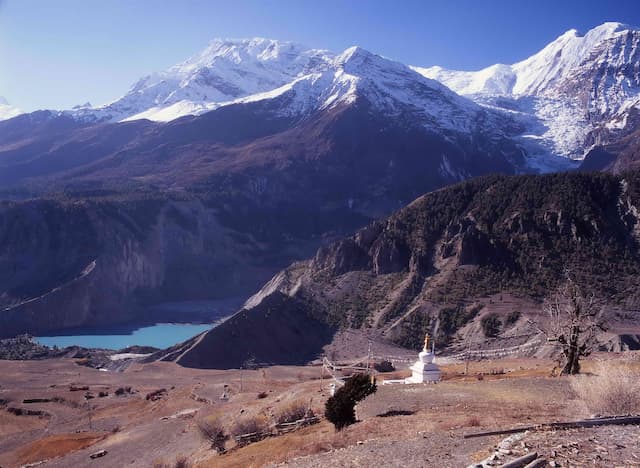




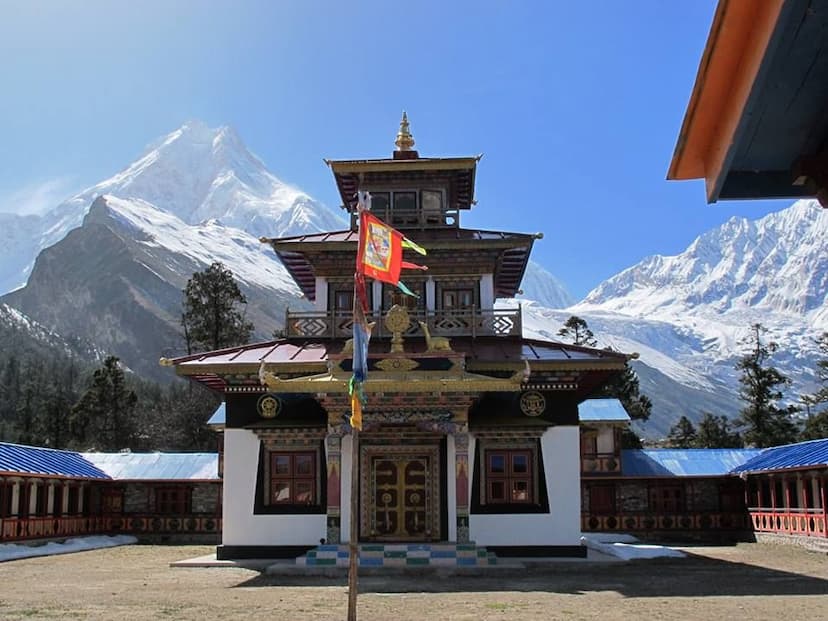
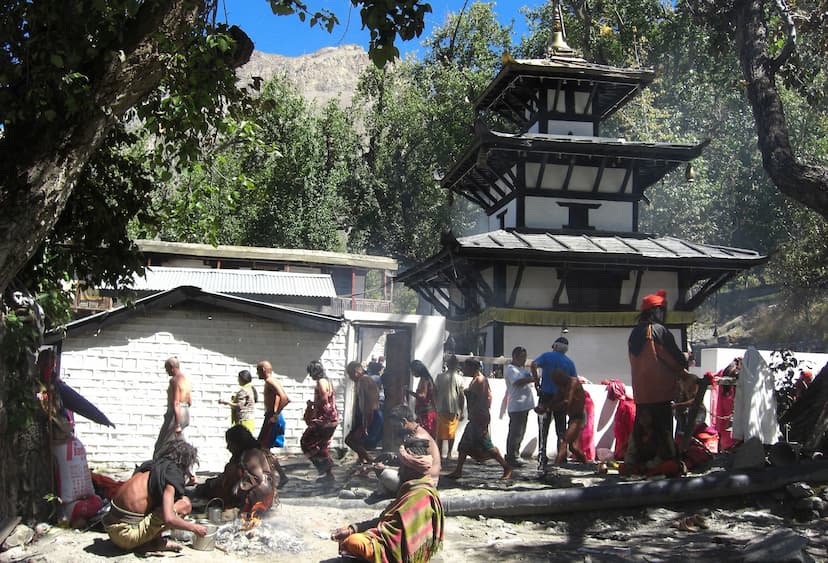

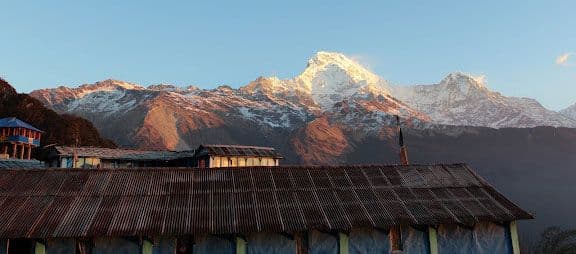
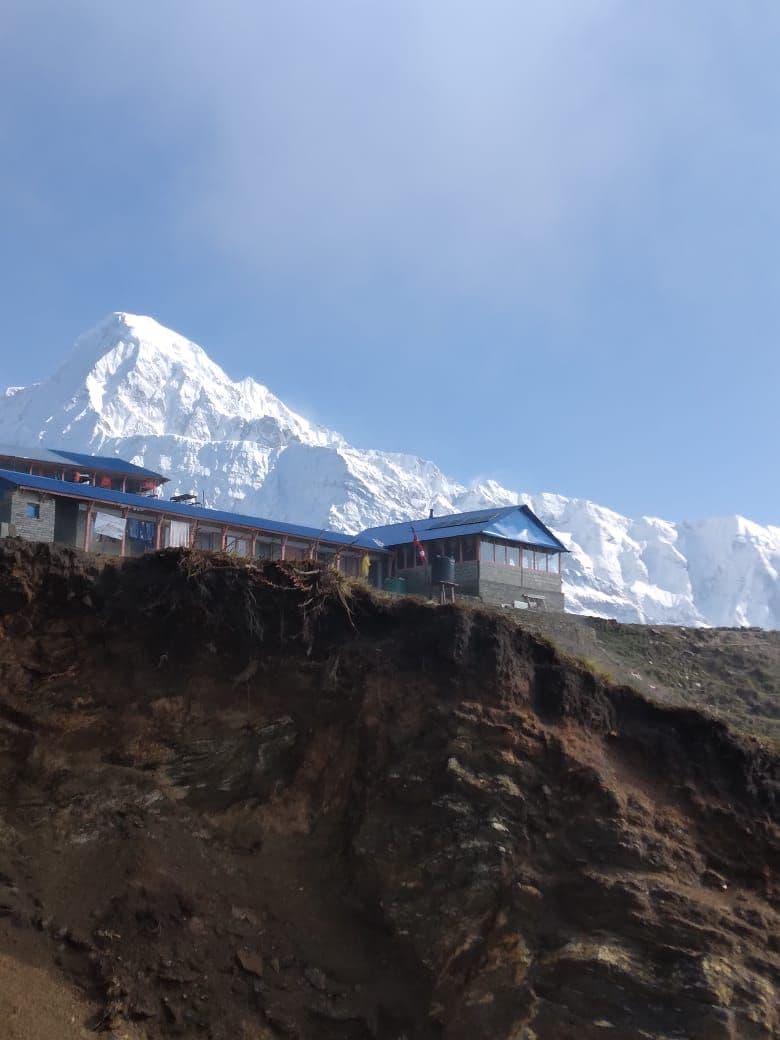
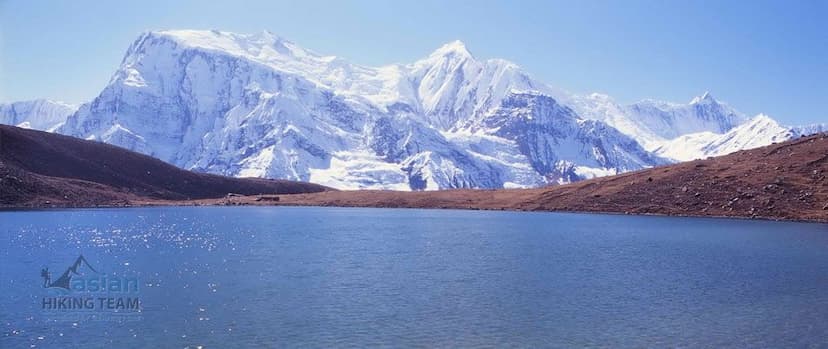 0
0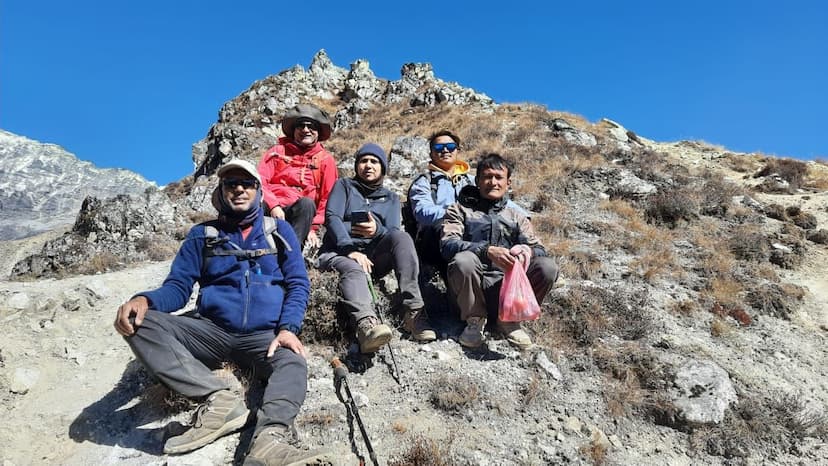 0
0 0
0